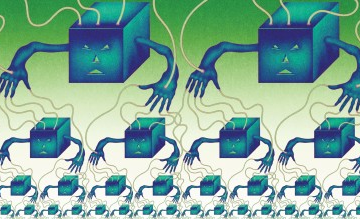Are NFTs driving the hype around the real estate metaverse?

by Miriam Mcgovern May 27, 2021
NFTs, The Metaverse, virtual real estate. If you’ve been following tech reports and news or even mainstream media, chances are you’ve heard one of these terms floating about. We are all familiar with the term ‘real-estate,’ and virtual real estate is exactly as you might imagine.
It’s a piece of real estate inside the digital world known as the Metaverse. The Metaverse is a shared virtual space. It consists of combining physical reality, virtual reality, and physically persistent virtual space. This includes all of the augmented and virtual worlds and includes the internet itself as a whole.
That’s a lot to take in. Simplifying the terminology, you essentially own a piece of digital land/real estate inside a virtual world. This will give you the privilege of building on your real estate plot. For a more visual aide, take a look at The Sandbox. You might notice a few recognizable names from companies that have already bought virtual real estate in this space.
How do I own it? It’s just a digital item somewhere on the internet. This is where the crucial part of it all comes in, NFTs. These tokens are the main reason for the hype around the real estate metaverse, and it’s showing no signs of slowing down.
What’s it All About?
NFTs have rocked the digital world. They’ve taken on a central role in this digital ecosystem, and it’s a very important one. It’s been talked about on many major news channels, and some celebrities are jumping on the trend. They aren’t a new concept though, back in 2014, two artists Anil Dash and Kevin McCoy, created a piece titled “Quantum.” This was the first- ever NFT created, a video of dollar symbols in a picture frame.
NFTs are part of the cryptocurrency space, and they rely on a digital ledger known as the blockchain. An NFT is a chunk of data stored on the blockchain, and it can represent all forms of digital items and even physical items more recently. NFTs provide proof of ownership of these digital assets, and they provide undeniable proof that certifies these digital assets are unique and not interchangeable.
What Makes an NFT Special
The acronym NFT stands for non-fungible token. Fiat currency, for example, is fungible. If you were to trade $1 for another $1 you would still have $1. But if you trade an NFT for another, then you have something entirely different. NFTs are trackable on the blockchain. Due to their immutable nature, everything is recorded and can never be altered or deleted. This is where NFTs attractiveness is, and they provide proof of ownership by using a blockchain like Ethereums to record its data.
NFTs are about providing undeniable proof of ownership of digital assets. The immutable data stored on the blockchain provides a very secure way to ensure that. NFTs consist of a cryptographic hash which is a string of unique characters and used to verify a digital asset as unique. They work alongside Smart Contracts, which are programs that run on the Ethereum blockchain and allow for users to interact with them via transactions.
Not Real… Estate?
NFTs, as you can already assume, are the key part of all this; they give you proof of ownership over digital items. Real estate in a virtual world can also be an NFT. In simplified terms, this will act as a deed to the land.
With this in mind, the metaverse is a very real concept that has big potential, and this is thanks to the development of NFTs. Virtual real estate assets that you actually own are becoming very sought after. Referring back to The Sandbox, this is not the only place to purchase. There are other worlds like Decentraland, Upland, and our own ESPA which houses unique assets as well.
People have been dreaming about this for years, even decades. The term metaverse seems to have first been conceptualized from a science fiction book by Neal Stevenson. He describes a cyberpunk world and covers topics like cryptography, computer science, religion and philosophy amongst others.
Neal currently works for a VR technology company Magic Leap, where he runs a team who research into new topics and directions for VR technology. The metaverse can become very real if big names start getting on board. It’s very early days for this, but as technology progresses we are seeing huge leaps in development. NFTs are bringing attention to the space, the introduction of this blockchain backed technology is definitely driving the hype around the virtual real estate metaverse.
The Metaverse
The popularity of NFTs in other niches and markets is also driving up the hype around the virtual real estate metaverse. As interest grows around this technology people will research into other areas, this will increase the hype around items that relate to the metaverse. As people begin to see value in other areas like art, there will be a perceived value in other areas like real estate.
It’s not just the virtual real estate, what’s helping with the hype are the assets that can be used inside the metaverse. Majority of these worlds also have NFTs in the form of items, buildings, fashion and more. Since NFTs give you ownership over your digital assets, it makes owning and buying these items more attractive.
The Big Role of NFTs
As already mentioned, NFTs are not just driving the metaverse forward. They are becoming very valuable in the worlds of art, fashion and online gaming too. Art is especially taking the
limelight, when an artist’s NFT is sold they get a cut every time the piece changes hands (wallets).
Fashion is starting to see the potential. Companies like Gucci are already experimenting with the possibility of NFTs. They are looking into not only attaching them to their real world items, but also creating some digital items. With the vision for you to carry them into your favourite place in the metaverse.
It’s not just big name brands, there are already companies like Digitalax who are pioneering the space and creating fashion in this futuristic world. They have provided some beautiful pieces for you to take into the metaverse, and this is showing how much potential people are seeing in the space.
Online gaming as you might have guessed is a big industry for NFTs to break into. Taking a look back at The Sandbox map, you can see Atari, and Roller Coaster Tycoon have purchased virtual real estate (a sizable amount). If you buy an NFT in a game, you own that item. It’s not just part of your account that the company owns, it is your item. You will be able to trade or sell that asset as you see fit. It’s all confirmed on the blockchain, and you can do what you want with your property.
This is monumental for games, even platforms like IMVU who boast over 7 million monthly users are looking into the metaverse. Pushing things forward, imagine a decentralized virtual space governed by the creators, modders, devs and players. This is what companies like ESPA are trying to achieve. To create an esports platform that benefits all involved and doesn’t have to deal with all the industry-political approval usually required.
What’s Next For NFTs and the Metaverse
AR and VR technology have come leaps in development in recent years, and these will be the key physical technologies to help people experience their purchased virtual assets. The digital transactions are confirmed, and they want to use and view their assets. VR will allow people to visit their virtual real estate places with an immersive feel. AR will allow for people to experience their fashion items by allowing them to be worn in a physical/virtual space.
The hype is very real; virtual real estate is also very real. Every virtual asset is a non-fungible token, even the land that you purchase. It’s like owning a deed to a house; you are confirming this is yours until sold. Many possibilities are surrounding this blockchain-backed technology. Not only is Ethereum something you should be researching, and staying up to date on. NFTs are proving to be a promising solution to the issues of plagiarism in the world of art, fashion and online gaming. Watch this space!
Miriam Mcgovern, supporter of DigitalAX, platform for digital fashion, sold as NFTs.







No Comment